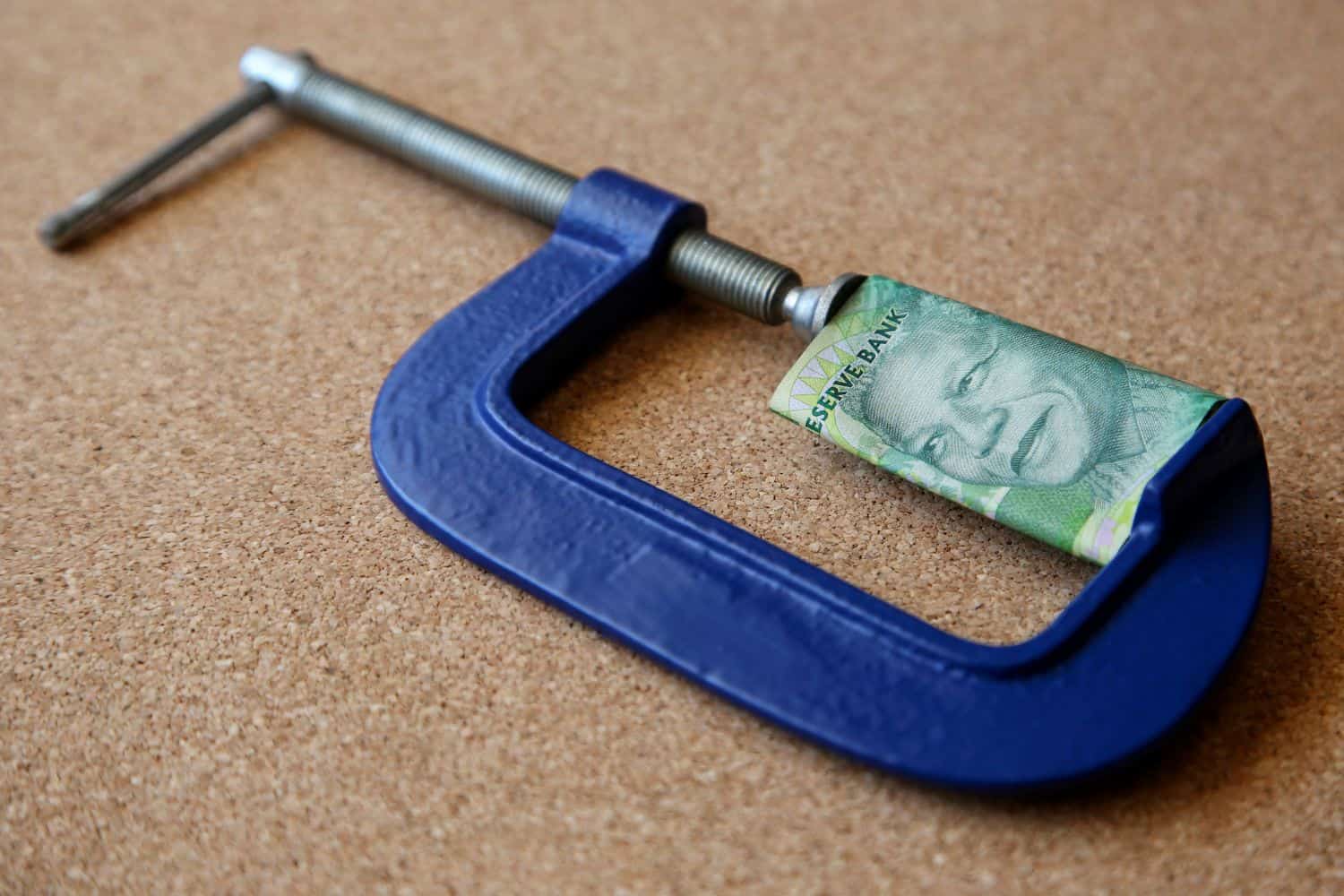Although the minister had many plans to make the economy grow, he had little immediate value to offer citizens.

There have been both positive and negative comments on Thursday after the minister of finance delivered the Medium-Term Budget Policy Statement (MTBPS). However, while there was good news for the long-term financial health of the country, citizens were left in the lurch with nothing to show in the short term.
Minister Enoch Godongwana delivered the MTBPS on Wednesday, framing government’s plans to spur economic growth, boost revenue and reduce funding shortfalls.
The minister faces a daunting basket of challenges, such as a staggering R75 billion hole in the national budget and unsurprisingly took a cautious and conservative fiscal stance, raising the need for revising economic growth and inflation forecasts, saying that the 2026/2027 Budget will include new revenue raising and expenditure cutting measures to address the shortfall created by 2025’s low economic growth.
ALSO READ: MTBPS: Praise from economists for strong announcements
Government’s commitment to stabilise debt
He further reaffirmed government’s commitment to stabilise debt, mobilise infrastructure investment and prioritise growth and service delivery. The minister also noted that the main budget primary balance for 2025/26 is expected to outperform the 2025 Budget estimates. Revenues exceed the 2025 Budget estimate by R19.3 billion.
“There are clear signs that consistent fiscal discipline is paying off in improved investor confidence. This has been aided by sound monetary policy, which has reduced inflation and inflation expectations, enabling lower interest rates,” Godongwana added.
As predicted, Godongwana announced the adoption of a 3% inflation target, replacing the previous 3–6% range, citing long-term benefits as the rationale for this. A lower, credible inflation target is expected to reduce inflation expectations, lower borrowing costs and stimulate investment over time.
He also emphasised government’s ongoing focus on energy reform, water security, transport logistics and digital infrastructure as part of Operation Vulindlela.
ALSO READ: MTBPS: Godongwana outlines plans to reach R1 trillion mark in infrastructure investment
Delicate balance between spending and revenue
Neil Roets, CEO of Debt Rescue, believes the minister attempted to strike a delicate balance between expenditure cuts, spending and revenue-raising measures, but that the trade-offs he proposed leave hardworking South Africans in the lurch.
“The minister opted to prioritise debt containment, inflation reduction and structural reform over immediate socio-economic relief, which means there will be no financial relief for citizens in the short term.
“Not adjusting tax brackets for inflation is not a viable solution, as that ‘bracket creep’ breaks the backs of taxpayers. Government must consider more aggressive support strategies for consumers facing financial distress. Households are stretched to the limit by high prices, stagnant wages and mounting debt repayments and people are desperate for relief.”
ALSO READ: MTBPS: SRD grant gets another extension
Revenue lagging behind while expenditure remains high
Leading up to the MTBPS, Investec chief economist Annabel Bishop pointed out that revenue collection is lagging behind target, while expenditure remains high. This means government will have to revise growth forecasts downward, making it difficult to balance the books.
“This leaves the country with a growing shortfall between income and spending. Currently, on the available data, spending is running ahead. Year-to-date R957.3 billion was spent out of R2 310.7 billion, with five twelfths of this R962.8 billion, resulting in total expenditure being over budget for the year so far,” she said.
While the broad consensus among economists is that government made progress in the months after the Budget Speech of 21 May, the reality is that the cogs are not turning fast enough to haul the country and its people out of the current economic downward spiral, that now sees 30.3 million South Africans, approximately 55% of the population, living in poverty and millions more relying on credit to get through each month.
ALSO READ: MTBPS: Godongwana pulls it off the first time this time
South Africa’s debt trap
According to economists, the country is on the edge of a financial crisis. South Africa’s debt-to-GDP ratio continued to increase since May 2025, reaching an estimated 77% to 77.4% in the 2025 fiscal year, with official projections indicating a peak in the 2025/26 fiscal year before a potential gradual decline. This upward trend is primarily due to lower-than-expected nominal GDP growth and ongoing fiscal pressures.
Roets says the impact on citizens will be very damaging. “The country will likely face a reduction in government spending on critical services like education and healthcare and we will almost certainly see increased borrowing costs and a higher tax burden.
“This will hinder government’s ability to fund social grants and infrastructure, which will have a domino effect on private investment and economic growth.”
ALSO READ: Mini-budget: new inflation target and fiscal anchor is coming
Potential solution: lower inflation target in MTBPS
A senior analyst from Fitch Ratings predicted the minister’s announcement of a revised 3% inflation target, a potential solution that Sarb governor Lesetja Kganyago has been pushing for some time, arguing that a lower target would support sustainable economic growth and cheaper borrowing costs if inflation slows and interest rates fall.
“While the 3% inflation target may be a good longer-term strategy, it will not save ordinary South Africans who are at the end of their tether soon. They need an immediate solution to the cost-of-living crisis,” Roets says.
“Most concerning is that, with the debt load at this level, government can no longer borrow more to finance its expenditure. If it wants to spend more, it will have to increase taxes. This will be a disastrous move that will cripple the country’s taxpayers who are the backbone of the economy.”
Looking ahead, Fitch projects debt rising slightly to 79.6% in the financial year ending March 2027. This is above government forecasts that estimate debt peaking at 77.4% this year before starting to ease.
ALSO READ: MTBPS: Godongwana says billions lost to illicit trade could have stopped tax hikes
Taxpayers bear the brunt in MTBPS
An increase in VAT has been a contentious issue since the minister proposed a raise in value-added tax (VAT) from 15% to 15.5% in February, causing a backlash that effectively ‘hung’ the National Budget for a period of two months.
On Wednesday, the minister admitted that this is not a feasible solution and said that ‘VAT hikes are off the table”.
However, this does not mean that taxpayers are off the hook. In the last financial year, Sars collected R19.5 billion in additional revenue by not adjusting tax brackets for inflation. This phenomenon, known as bracket creep, means that as taxpayers’ salaries increased to keep up with inflation, they were pushed into higher tax brackets, resulting in them paying more tax but earning less in many cases.
“The implications of higher personal tax income due to bracket creep, delivered a heavy blow to hardworking citizens who are barely keeping their heads above water. With the current debt-to-GDP ratio projection, the government may well need to further increase taxes, such as personal income tax or VAT, which can erode disposable income and further burden ordinary South Africans.
“We need solutions that relieve the pressure – rather than exacerbating it. What we need is a solid plan of action to tackle the fiscal deficit: disciplined budgeting, efficient tax collection and responsible spending.
“There should be a laser focus on stimulating economic growth, bringing relief to hard-working taxpayers and job creation that targets our youth, otherwise we are looking at a mounting socio-economic crisis.
“Where to from here, Minister Godongwana? The eyes of the nation are on you.”






